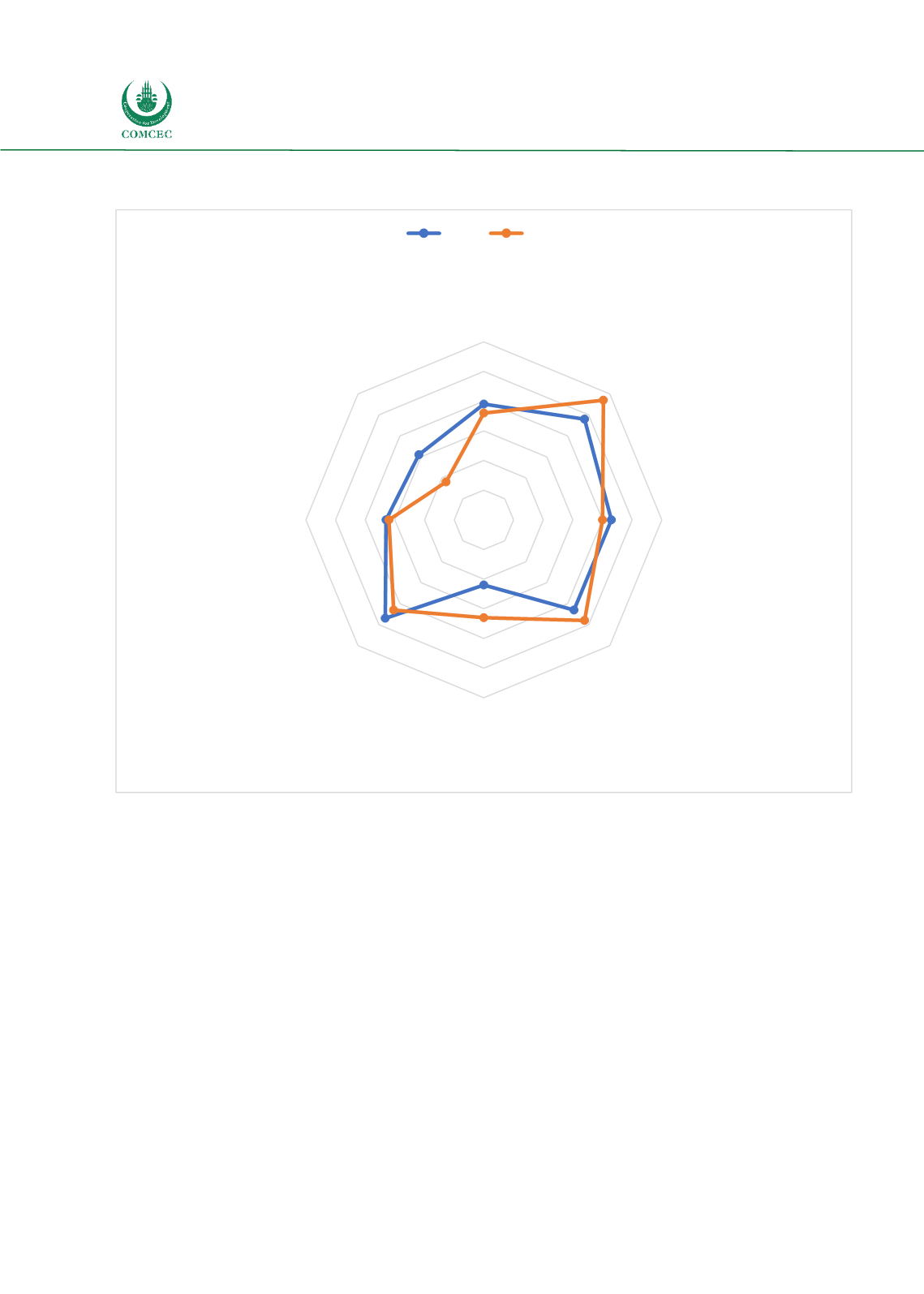

Sustainable Destination Management
Strategies in the OIC Member Countries
178
Figure 52: Radar Chart Showing Eight Indicators of Egypt and Jordan (no data available for other
countries)
Source: DinarStandard
The Holy Family Corridor has tremendous potential for religious and cultural tourism. It tells a
compelling story as a whole but can be categorized as an ‘informal’ corridor. The countries
involved in the corridor are Egypt, Jordan, and Palestine (which is not part of the graphs due to
missing data). Based on the learnings from the case study, we recommend the following policies
for this corridor.
Setting Up a Governance Structure
We recommend formalizing the formation of the Holy Family Corridor through a collaboration
agreement between the parties involved (Egypt, Jerusalem, Jordan, Palestine). A public-private
partnership structure with governments and DMOs, advised by religious organizations,
development organizations, as well as private sector partners. This would ensure that
government interests are protected as well as the interests of varying organizations.
The managerial structure of the organization has to be assessed. A single organization to
manage the corridor is recommended. However, this should be carefully structured to prevent
0
1
2
3
4
5
6
Overall Score
Safety and secutiry
Human resources and labour
market
ICT readiness
International Openness
Environmental sustainability
Infratructure
Natural and cultural
resources
Egypt
Jordan
















